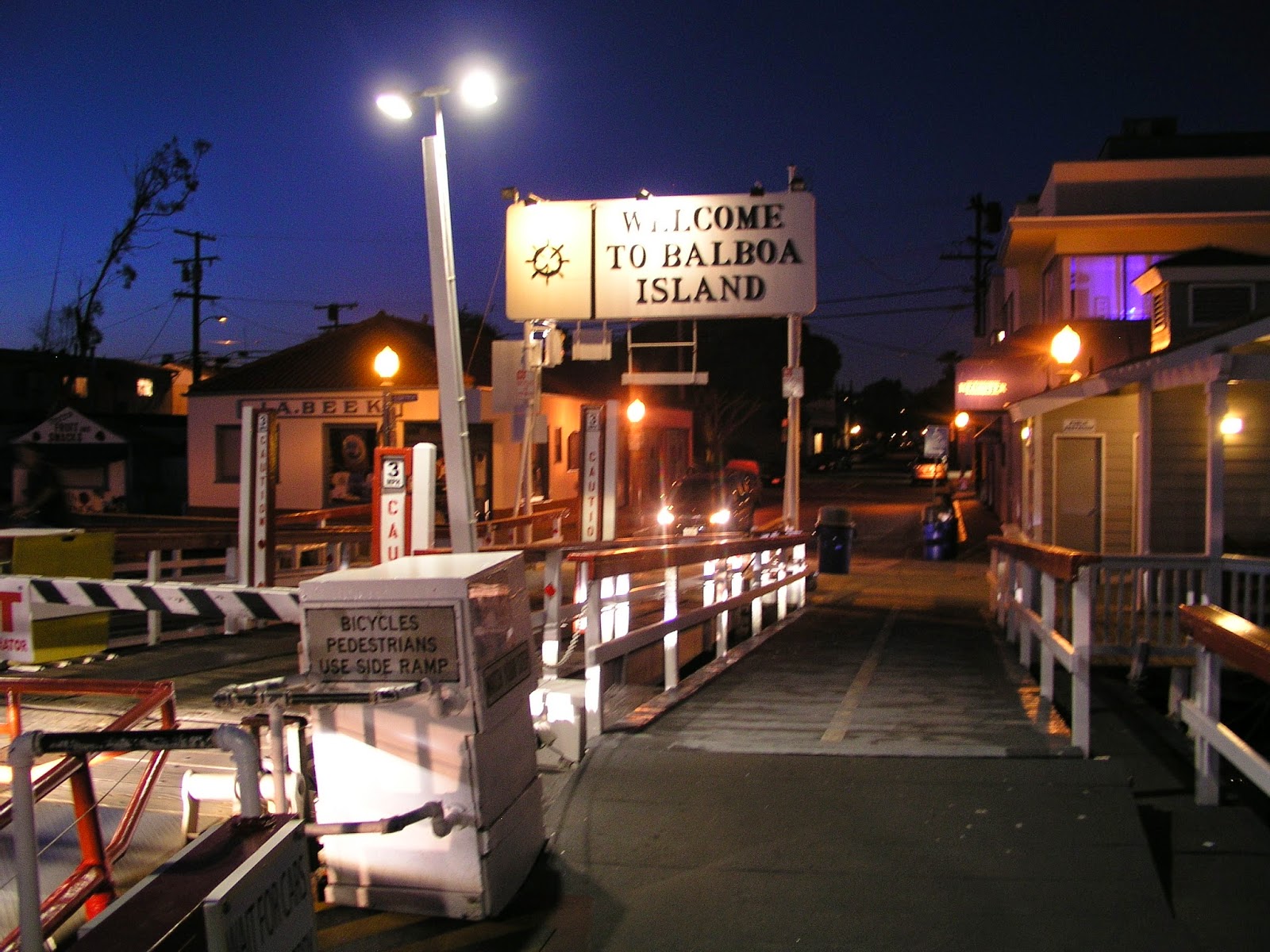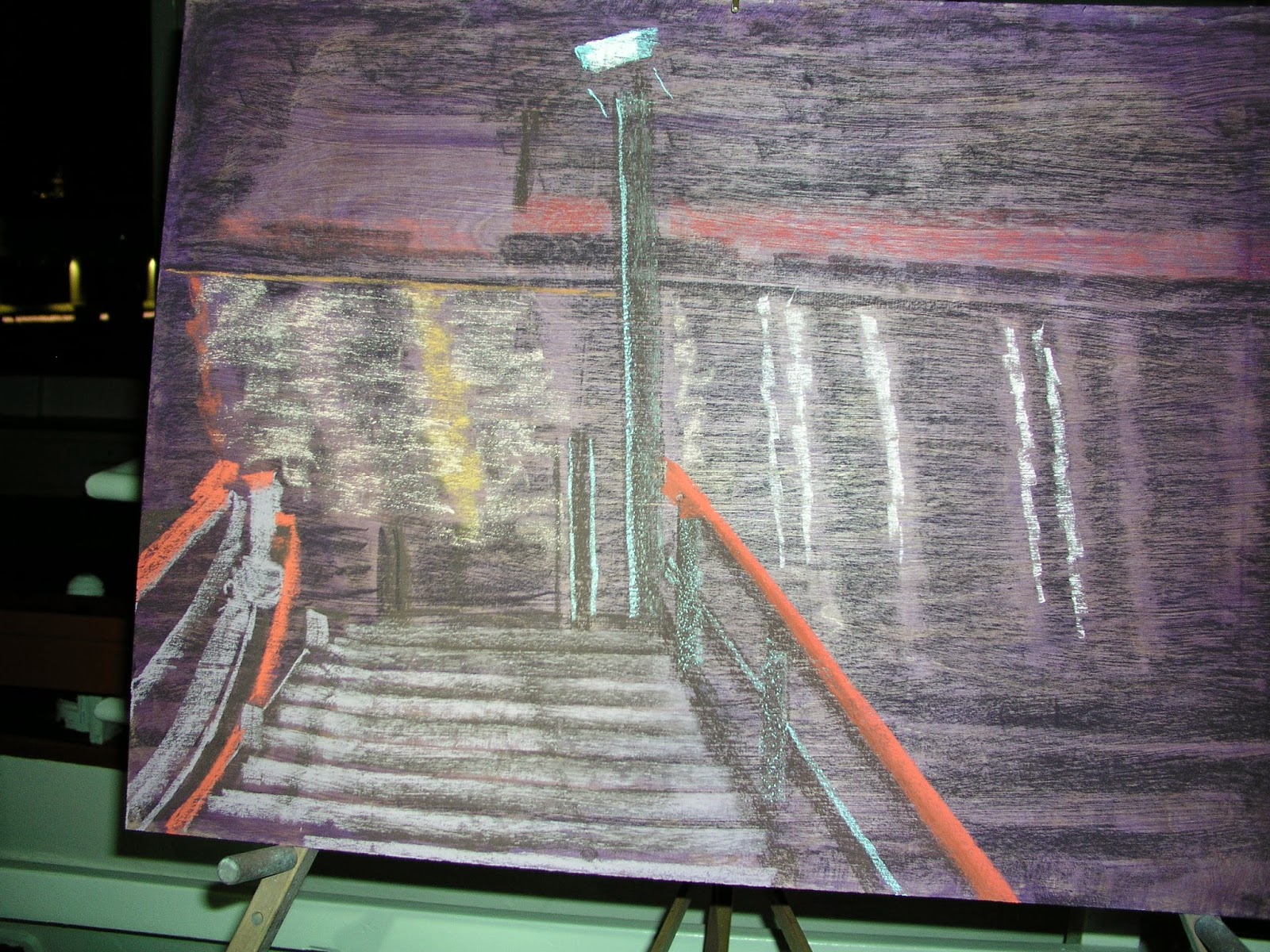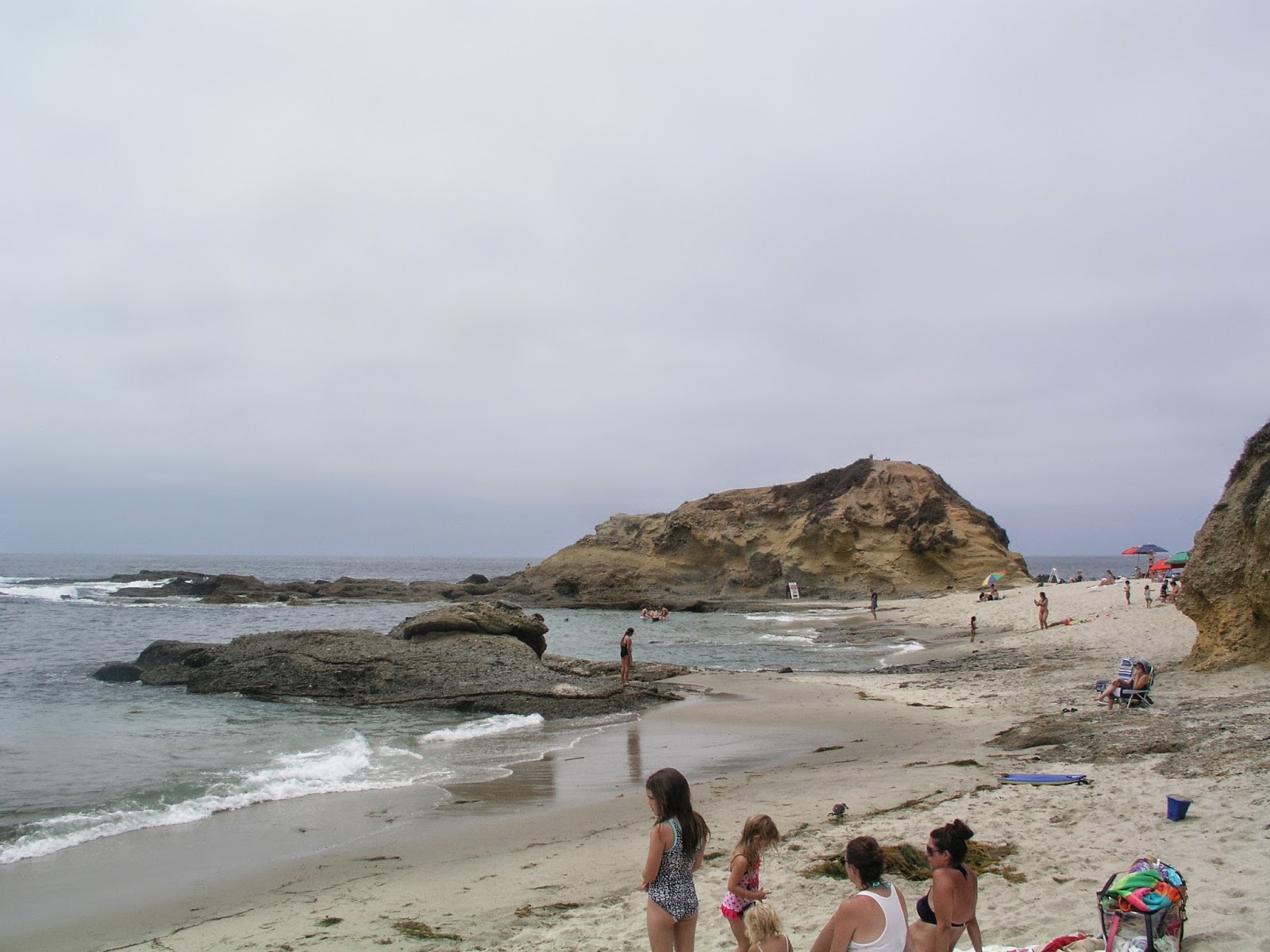I have been making boards for a while now and I am wondering about other plein air surfaces. These boards are easy to make, inexpensive, sturdy, archival, and are suitable for pastel, oil, or acrylic.
I make the boards using acrylic paint, pumice gel, and water. I do not have a formula for the ratios of paint to pumice gel to water. I mix up my approach every time I make these boards. I use a good 2 side 3ply plywood that is sanded and cut down from a 4'X 8' sheet down to various sizes. I usually work on 2'X3' and 2'X2' boards. I am going to start mixing up my board sizes so that I do not get stuck in a rut with my compositions.
I choose the color based on the lighting the day I am painting. The amount of water and pumice gel is determined by how much tooth I think I am going to need for the painting.
I use a plastic paint tray and 3" paint brush used for house painting. I put the water in the tray and add the acrylic paint and the pumice gel. I mix to a consistency of pancake batter. I prepare 3 to 4 boards at a time. I usually apply 2 to 3 coats of my mixture to the boards. The boards take about 10 to 15 minutes to dry depending on the temperature.
Thursday, August 28, 2014
Nocturn
This was the color of night. I wanted something that would allow me to go darker than the ground in expressing my composition. I was hoping to get there early enough to catch the twilight.
 |
| I wanted to paint from the Balboa Island side because of the view of the peninsula. The Balboa Yacht Club and the landing both provide spectacular reflections which is what I was looking for. |
Nocturn
 |
| I wanted to capture the painting without using a flash. The problem was the length of the exposure needed to capture my progress was too long. I was unable to hold my hand still enough. |
Nocturn
 |
| I had not been to the Balboa Ferry for years. I was taken by all of the different possibilities for paintings. It seems like time has not changed this area. |
 |
| I had to do some editing to the composition. I found the rails in the foreground and the back of the ferry distracting, so I eliminated them from my painting. |
This is my solution to the distractions of the rails and the other ferry.
Nocturn
 |
| This is where I painted from. It would have been impossible to paint here during the day. |
As I was painting the reflections in the water, I found them to be much more calm than they appear in this photo. Next time I paint reflections I will have to find a way to see them more like they appear in this photo. I usually accentuate the element that I find most interesting in the composition; it is unusual for me to understate the most interesting element in the painting.
Nocturn
Wednesday, August 27, 2014
Painting with Jeff Horn
I really looked forward to attending this mentor paint out with the Laguna Plein Air Painters Association because I had happened across Jeff painting at Corona Del Mar a couple of years ago during the LPAPA Invitational. It was nice watching Jeff go through his process.
I got there a little late because I had to park about a half a mile away. Because I was carrying my full load, (which weighs about 50 or more pounds) I was fully warmed up and ready to paint by the time I got there. The challenge for me is to balance my desire to learn with my eagerness to paint.
Here are some of the points Jeff made while doing his demonstration.
I was eager to get my painting started. As soon as Jeff said we could paint I started painting. I was too eager and as a result I did not get the drawing part of my painting correct. If you look at the rock over the arch you can see that it extends too far over the big rock in the water.
24"X 36" soft pastel over a board with acrylic and pumice gel
I got there a little late because I had to park about a half a mile away. Because I was carrying my full load, (which weighs about 50 or more pounds) I was fully warmed up and ready to paint by the time I got there. The challenge for me is to balance my desire to learn with my eagerness to paint.
Here are some of the points Jeff made while doing his demonstration.
- Starts painting by massing out the darks and then works to the light masses.
- Keep you darks dark and your lights light.
- You never get your darks dark enough if you work a mixture that has white in it into your darks.
- More important than color is value. Put down you best guess with your color and then mess around with it. You can mess around with color and not hurt your painting but if you mess your values up you are in trouble.
- Jeff strives to get all of the canvas covered with paint and get the values established first.
- Jeff uses the soup method for mixing colors. He gets the paint down on the canvas and mixes one color around with others on the canvas.
- He is looking for the big relationships within the painting.
- He said be brave do not be afraid to put the paint down-something he repeated several times during the paint out.
- While looking at the big relationships within the painting he is also looking for the abstract relationships within the composition.
- He quoted Renoir: "I don't paint things I paint the relationships between things."
- He described his technique as just putting down spots of color,
- Mix your paint on the painting.
- Ball park your color relationships in the painting.
- What color is it generally and then go through all of the questions-warmer cooler etc.
- No formula for his approach.
- It's not the color you put down it's the color you put down next to that color.
- Try and paint the relationship.
- Puts down color without judging his effort-too early on the process.
- Keep edges soft to begin with and then decide where you are going to put your hardest edges
- The more you paint the better guesser become.
- The variety of marks and putting down different marks to reflect the rhythm of the painting is what Jeff thinks he excels at.
- If you know what the generalities are then yo know what the exceptions are.
- Always put something in your white.
- Squint to see the general thing and then work to see the specific thing.
- Held brush up with color on it to see if it matched what he wanted to match.
- It is a different day and I am a different me and we are all together in this struggle.
I was eager to get my painting started. As soon as Jeff said we could paint I started painting. I was too eager and as a result I did not get the drawing part of my painting correct. If you look at the rock over the arch you can see that it extends too far over the big rock in the water.
Notan
Monday, August 25, 2014
It's Time
Subscribe to:
Comments (Atom)















































